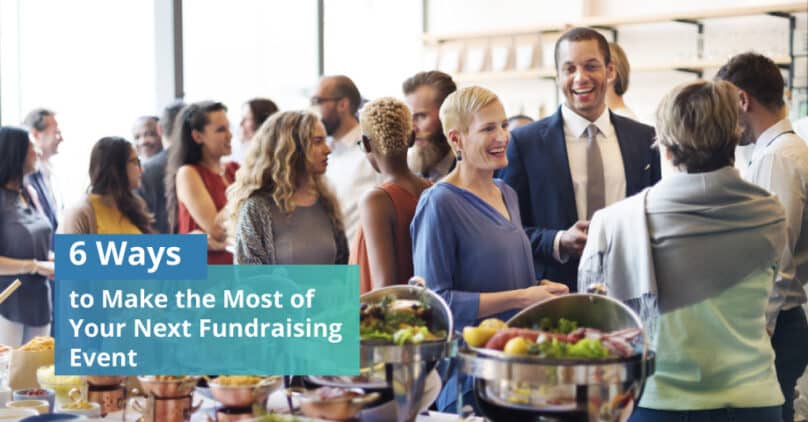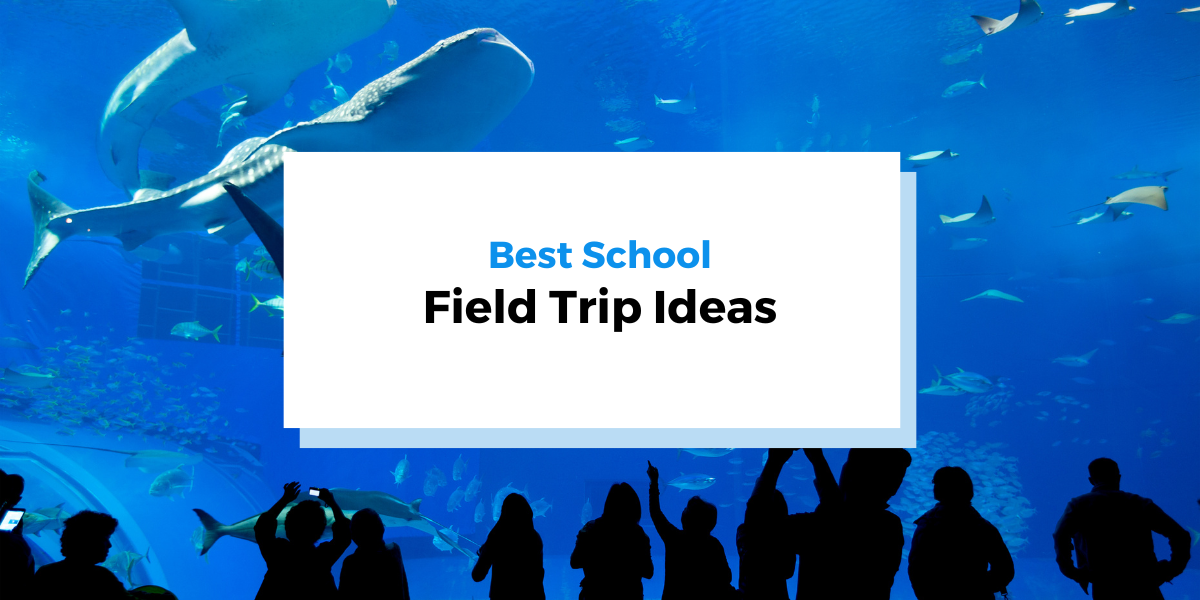When it comes to planning your next fundraising event, there are several factors that can influence your approach. These can include how well your past events have gone, how much money you have in your budget, the size of your team, and more.
If you’re looking for ways to make the most of your upcoming event, it’s a good idea to acknowledge the challenges that come with event planning and meet them head-on. For that reason, we’ve compiled 5 awesome ways to make the most of your next event, increase attendance, and maximize the funds you raise.
In this article, we’ll discuss:
- Your registration form
- Promoting your event
- Peer-to-peer fundraising
- Early incentives
- Teamwork
- Studying the data
Keeping these points in mind will help you stay on track during your planning process and meet any obstacles with ease. Are you ready to take a closer look at how you can make your next event a success? Let’s dive in!
1. Optimize your registration form.
Everyone’s first impression of your event will come from your registration process. Offering online registration for your fundraising event will make it easy not just for your attendees, but for your nonprofit, too.
Registering people online will allow you to quickly pull the attendance data and analyze it. This will help you keep track of the information you need and plan accordingly based on attendance.
Here are some tips for creating a registration form:
- Invest in the right software. Rather than using a simple Google form for registration, invest in a registration software solution that can offer reporting and other features.
- Make registration simple. Make sure the registration form only asks for what you need and doesn’t have too many extra fields. Too many fields to fill out could cause people to abandon the form.
- Avoid distractions. Don’t add too many distractions, such as donate buttons or volunteer application forms. If you can, try to keep these separate so that individuals remember what they came here to do: register for your event.
- Streamline the process. For guests who have registered online, check them in quickly and efficiently at the event for easy processing.
- Optimize for mobile. Many individuals prefer to access forms on their mobile devices. Make sure your form is optimized for mobile to increase the chances they’ll register.
- Clearly explain the event’s format. An increase in remote fundraising capabilities has opened the doors for nonprofit organizations to do more online than ever before. For this reason, it is important to set expectations of the event format with your donors. Whether your event is virtual, in-person, or hybrid, clearly communicate these details from the start.
Finding the right event software is key for your donors to have a great first impression of your event. If registrants have a positive experience with your registration process, they’ll expect the same from the event itself.
2. Promote your event.
In order to attract a lot of guests to your event and get them to that registration form, you need to promote it! Using multiple channels to promote your event will ensure that the word gets out and that you meet your attendees on the platforms they’re using.
For instance, to promote your event, you can use:
- Social media. Determine what platforms you should promote your event on, based on the platforms your target audience is using. For instance, many generations use Facebook (via event pages, business profile pages, etc.), while younger generations tend to use Instagram as well. Depending on your target audience, use the appropriate avenues to promote (whether it is paid media or organic).
- Email marketing. Email marketing is still alive and well. Promote your event through email by reaching out to those in your nonprofit’s CRM. Be sure to take advantage of personalization tools to make recipients likelier to respond and register for the event.
- Sponsorships. Reach out to local and large businesses to see if they would like to sponsor part (or all) of your event. This is a great way to boost your budget and get the word out about the event itself. This can also be a great way to get your board engaged in fundraising. Typically board members have lots of connections in the community – use them!
- Your website. Promote directly on your website as another great way to make the most of your event. You can also promote on your online fundraising site, such as your mobile bidding site for an auction event.
In addition to your promotional plan, it’s important to include the entertainment and run-of-show highlights that your attendees want to see, such as expert guest speakers or local celebrities. Additionally, there are a few reasons why your previous events might not have resonated with guests, so be sure to solicit feedback from past attendees and/or your constituents to learn what interests them.
By using a multi-channel approach, you’ll reach more people than you would have otherwise and open the floodgates of awareness to your event!
3. Incorporate peer-to-peer fundraising.
One of the most powerful fundraising methods is peer-to-peer fundraising. Through this social giving approach, you can expand your outreach beyond your typical fundraising circle. Essentially, during this type of fundraising, nonprofits recruit their supporters to fundraise on their behalf.
Here’s how it works:
- The nonprofit chooses a peer-to-peer fundraising platform and establishes its goal.
- The nonprofit sets up a peer-to-peer fundraising campaign page.
- The nonprofit recruits its supporters to set up their own individual pages.
- The nonprofit provides tools and resources to support individual fundraisers.
- The individual fundraisers launch and share their pages with their friends and family.
- The nonprofit tracks the progress and provides ongoing support.
Simply put, you can reach more people by associating a familiar face with your organization and leveraging the power of social networks. If your individual fundraisers share what your nonprofit means to them, their friends and family will be likely to donate to your cause. Peer-to-peer fundraising works as a great lead-up to events like walkathons and 5Ks.
Ambassador Fundraising campaigns are another fruitful option that can provide all kinds of engaging content for your event’s program (social media, challenges, short speeches, recognition ceremonies, etc).
For more information on the power of social fundraising, check out the OneCause guide to peer-to-peer fundraising.
4. Offer early registration incentives.
Part of making your event successful means getting creative. If you want to increase attendance, try offering early registration incentives. Try out these early registration incentives to increase your overall attendance:
- Discounted tickets. If your guests register for the event within a certain timeframe, offer a discounted ticket price as a reward. This can be made even easier if you automate your process so that the ticket prices adjust automatically based on the time of registration.
- Merchandise. Give out swag bags to the first 20 or so event registrants. You can include custom merchandise like t-shirts and other items specific to your organization or event. This will be a great way to promote your nonprofit after the fact, too!
- Premium packages. You can also offer special incentives related to the event experience that registrants can select, such as VIP access, experience packages, enhanced food and beverage, and backstage tours.
People love freebies and discounts, so take advantage of the offerings you can provide and appeal to more guests. By incorporating swag bags, early bird discounts, and premium packages, you’ll increase your attendance and (hopefully!) your fundraising results as well.
5. Put together a team.
Of course, putting on a fundraising event requires planning and organization. To do all of this effectively, you need to put together a strong team that can successfully plan and execute the event.
Your team should consist of different team members (and even volunteers) who have particular skills they can put to work. Consider the following strategies as you organize your planning team:
- Meet regularly. Make sure your planning committee meets regularly and at least a few months in advance of the event. This way, they won’t be scrambling to tie up loose ends in the days leading up to the event.
- Delegate tasks. It’s important to delegate tasks to certain individuals on the team. For instance, if you’re running a charity auction, make sure you have a procurement team in place to find appealing items that will raise the most bids. If you’re looking for ideas on what to procure, OneCause outlines several successful auction item ideas.
- Draw on people’s skills. Let’s say you have a really creative member on your planning committee. Have them design marketing materials or write the email templates that will go out. Then, call on your most organized team members to handle the invitations, book venues, and schedule any speakers or entertainment.
We know every team’s size and skill look different, but make sure to draw on different team members’ strengths and capabilities in order to produce a great event that will have guests returning to support your nonprofit in the future.
6. Studying the Data
After your deep sigh of relief and accomplishment from a successful fundraising event, the next step is to look back and study your data. Actively learning from your event is the best way to make the most of your next event.
A big perk of choosing the right fundraising software solution is ensuring you’re collecting the right data at each stage of the fundraising process. Once you have the proper data in front of you, first consider whether your event reached its goals in terms of revenue and engagement. Then, look to other metrics that roll up to those big goals. Some data segmentations to look for are:
- Registration process
- During the event itself
- Donations collected as part of a broader campaign
- All the ways donors engaged
- Top auction items
The power of analyzing your event data is making decisions based on the data you are seeing from your supporter and donor base. Some examples of changes you could make include:
- High interest in pre-event ambassador fundraising. Lean more heavily into this strategy next year!
- Decreased revenue from virtual audiences. Look at the engagement strategies you employed and strengthen them in your next hybrid event.
- Surge in last-minute registrations. Review your marketing strategy and find out why supporters didn’t see your promotions earlier or what you can tweak.
Maximizing your online presence and having all the pieces in place will definitely help make your event a success. With online registration and promotion, you can reach out to far more attendees than you would have otherwise.
Try out these strategies for yourself and get started on planning that next great event.
Author: Kelly Velasquez-Hague
Kelly Velasquez-Hague brings over 20 years of fundraising, nonprofit management, and sales/marketing experience to her role as the Director of Content Marketing for OneCause. As a member of the OneCause sales and marketing team, Kelly manages all of the company’s content strategy and execution. She is passionate about empowering great missions and loves that her current role allows her to continue to help nonprofits reach new donors and raise more funds for their cause.


















